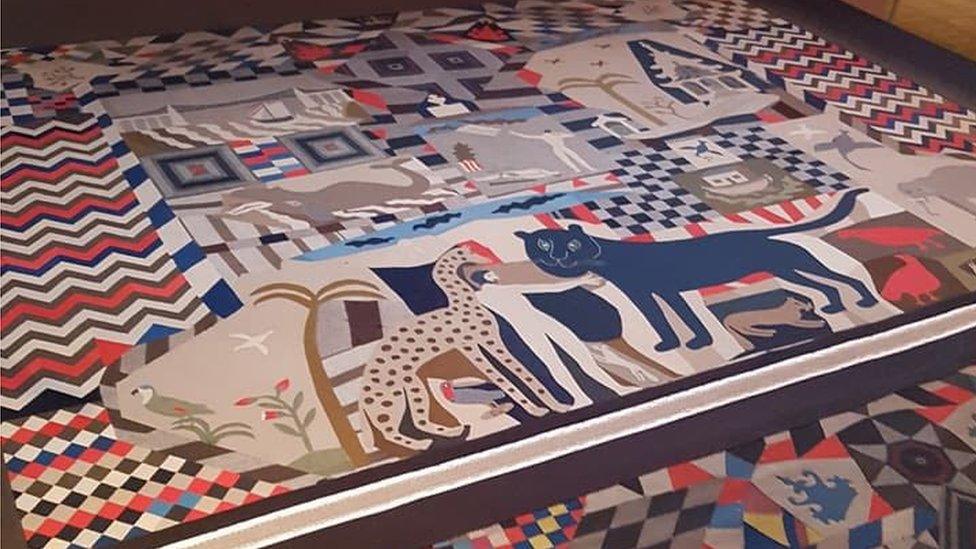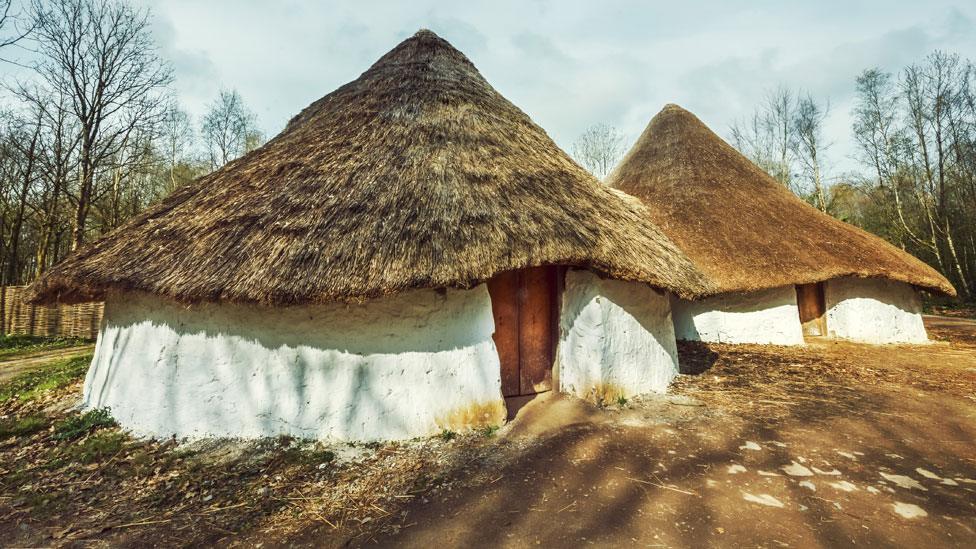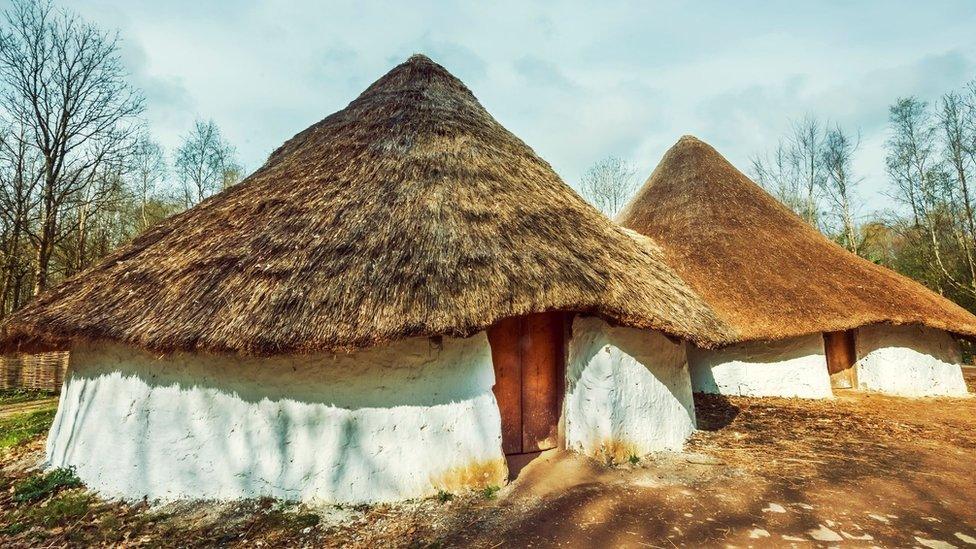Wrexham tailor's quilt inspires Alexander McQueen show
- Published

James Williams spent a decade creating the quilt in his spare time
A quilt created by a tailor from Wrexham in the 1800s has inspired a coat from a world-famous fashion house.
Alexander McQueen revealed the single-breasted coat with a swallow tail in its autumn/winter 2020 show.
The company's designers gave a nod to tailor James Williams, whose quilt is now at St Fagans National Museum of History, for the inspiration.
His great-great-great-great-granddaughter Tiffany-Jayne Davies said it was "incredible".
She said: "I can't believe it, it's amazing to think the designers saw that and decided to create something from it.
"Just to see how far from a little Welsh town like this it's travelled, to see his work and name being echoed in Paris, is just amazing."
Ms Davies, who is an artist, was not aware of Alexander McQueen's plans until the coat was unveiled as they were kept "top secret", but she received a message from St Fagans' curator to inform her.
"If they sent me a coat, or one of the handbags, that would be nice!" she said.
Mr Williams created the quilt in 1852 in his spare time, and St Fagans describe it as "probably one of the most well-known patchworks produced in Wales".
"It's just incredible to think of him at home sitting there doing it in the evenings after work," Ms Davies said.

Tiffany Jayne-Davies and her family were able to touch the quilt while it was on loan in Wrexham
Ms Davies said she had believed Mr Williams was a great uncle until the St Fagans curator informed her he was much more closely related than believed and was a grandfather.
The family visited the quilt while it was on loan to Wrexham Museum, and were allowed to touch it.
According to Elen Phillips, principal curator of textiles at St Fagans, the design is "unlike any others in the museum's collection".
Its background is a pieced composition of diamond patches, chevrons, squares and rhomboids. Biblical scenes dominate the centre and other motifs include the Menai Suspension Bridge and Cefn Viaduct, she said.

Tiffany Jayne-Davies and her family visiting the quilt in Wrexham
Mr Williams created it from old military outfits, having made military suits during his career. In total it consists of 4,525 separate pieces of cloth.
"The technique requires a high degree of skill," Ms Phillips said.
It is believed Mr Williams spent a decade completing the piece in his spare time, and it was displayed at the Art Treasures Exhibition in Wrexham in 1876, at the Palace of Arts in Wembley in 1925, and at the Wrexham National Eisteddfod of 1933.
His grandson sold the quilt to the museum during the economic depression of the 1930s.
- Published3 July 2019

- Published18 October 2018

- Published25 April 2019
